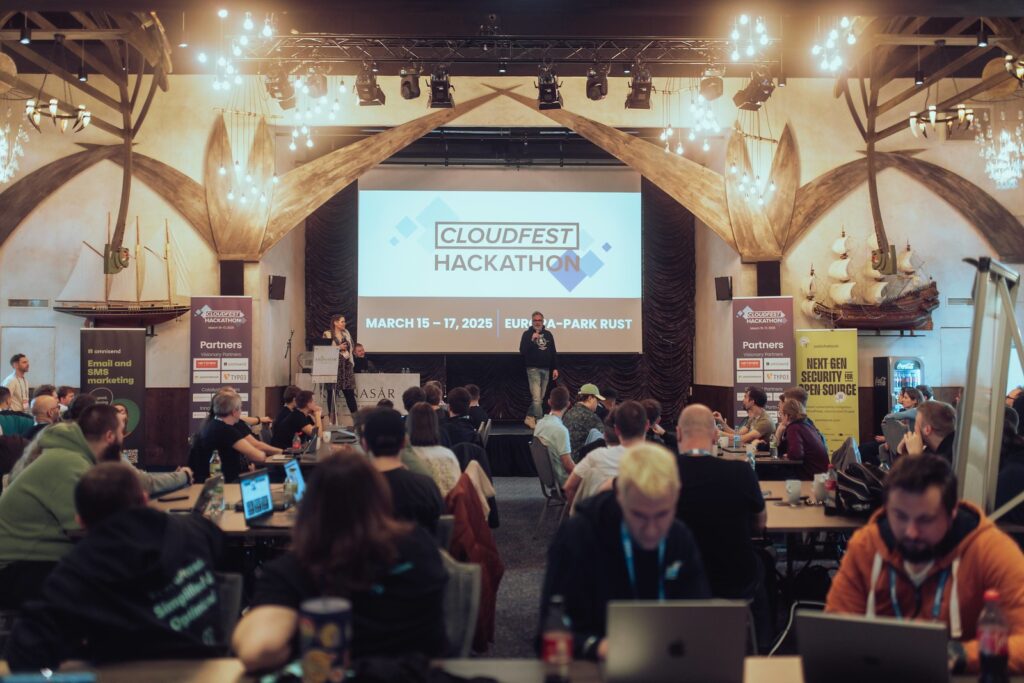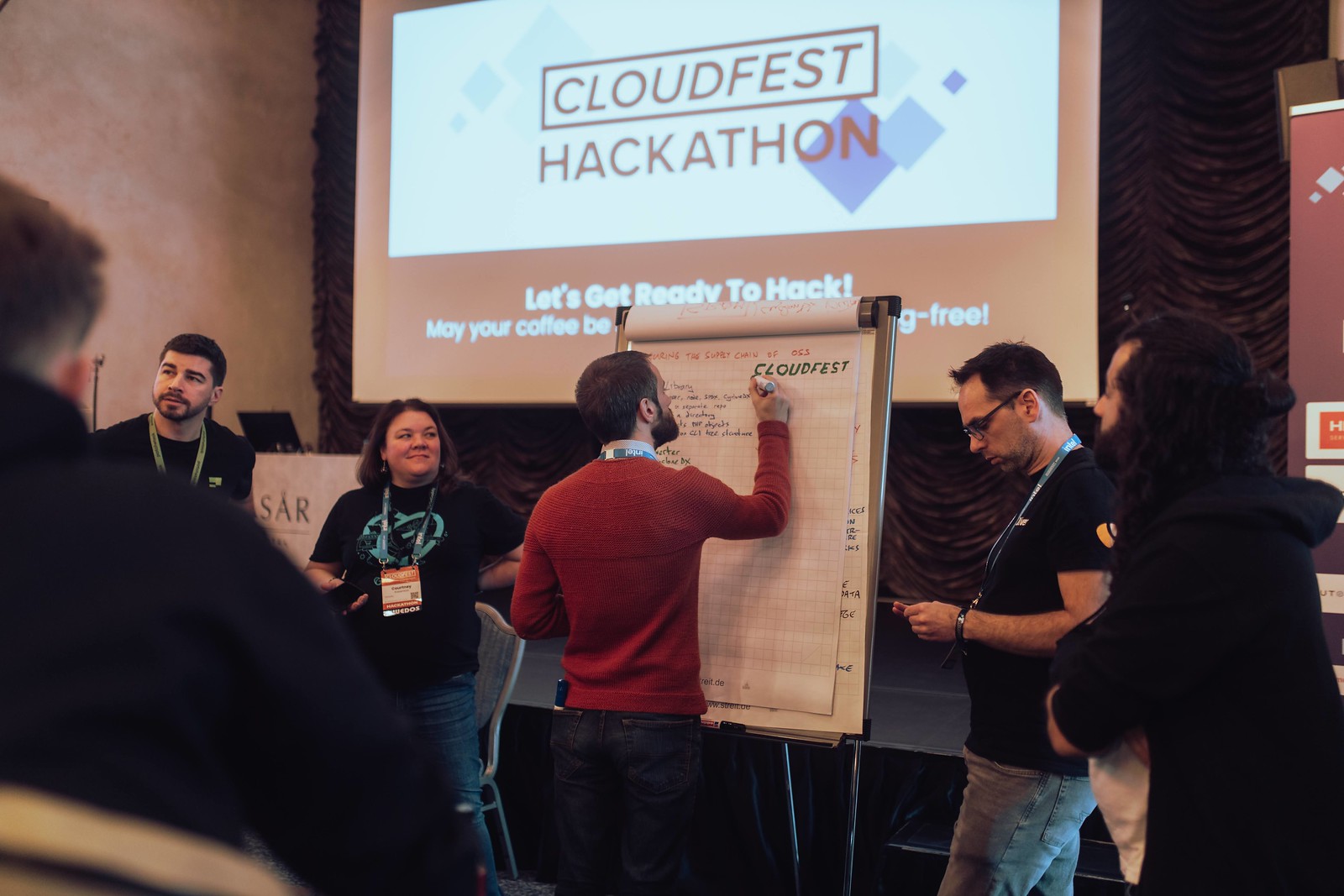Hackathons aren’t just for show. They’ve birthed real products, startups, and features you probably use.
Carousell, a popular online marketplace in Asia, sprang to life at a 54-hour hackathon in Singapore and today is valued at over $1 billion.
On another continent, a couple of developers at a TechCrunch Disrupt hackathon prototyped a group texting app in a single weekend; that project became GroupMe, which was snapped up by Skype for around $80 million just one year later.
Even the ubiquitous automation service Zapier started as a hackathon project (at a Startup Weekend). Fast forward, and it’s a multi-billion-dollar company simplifying workflows for millions. Not a bad return on a weekend of coding and cold pizza.
And it’s not only startups; big tech companies have hackathon origin stories for some of their coolest innovations. Facebook is famous for its internal hackathons, which have generated features used by billions. The Facebook “Like” button you click every day? It was first built during a Facebook hackathon back in 2007.
Facebook Chat, Timeline, the ability to tag friends in comments – these all started as overnight hackathon experiments by small teams of engineers and interns. Hackathon meaning at its core is about breaking boundaries and connecting people.
The takeaway of hosting a hackathon: given a couple of days of intense focus, freedom to tinker, and maybe a competitive spark, hackathon teams can produce prototypes that turn into real-world products. The cloud industry knows this, which is why hackathons have become an indispensable part of the innovation culture.
Hackathons in the Cloud
Why are hackathons and cloud computing such a perfect match? In a word: resources. In the old days, a hackathon team might have been limited by whatever hardware they lugged in or the software on their laptops. Today, thanks to cloud platforms, a tiny team can leverage infrastructure and services way beyond their personal rig.
Need a server backend at 3 AM? Launch an EC2 instance on AWS or spin up an Azure Function on the fly. Want to use a machine learning API? GCP’s got plenty. What is a hackathon competition if not a structured excuse to play with cutting-edge technology?
Modern hackathons are often all about building cloud-native solutions, because the cloud lets you do insanely cool stuff on a hacker’s timeframe. The result: projects that would’ve required a week of setup can go from zero to demo in a matter of hours when you’re using scalable cloud services.
It’s not uncommon to see a hackathon demo that’s deployed live to the cloud (domain name, load balancer, database, and all) before the judges even step into the room.
Take the CloudFest Hackathon 2025, for instance. Held at Europa-Park in Rust, Germany, it brought together 110 attendees from 24 countries, collaborating on 10 innovative projects aimed at enhancing the open web.
The standout project, “Accessible Infographics,” clinched both the Overall Winner and Breaking Barriers awards. This team developed a WordPress plugin that transforms the creation of accessible infographics from an hour-long manual task into a two-click process, making inclusive design more attainable for content creators without coding expertise.
Why cloud-first companies should host hackathons
During a hackathon, people have the freedom to work on wild, out-of-the-box ideas in a low-risk environment, without the usual “but will this deliver quarterly ROI?” pressure. Those ideas can lead to creative solutions and new features that wouldn’t surface in a normal meeting.
Hackathons can also help break down silos in a cloud-first org. Often, your devs, ops, architects, and product folks are spread across teams focusing on their own corners of the cloud. A hackathon throws them together in cross-functional teams, mixing skills and perspectives.
Microsoft famously leverages this effect: its annual global hackathon (the largest private hackathon on the planet) brings 100,000+ employees and interns together from all over the company, explicitly to inspire employees, build community, collaborate in teams, and maybe create the “next big thing.”
Not every company is as huge as Microsoft, but the principle scales down. A hackathon can unite people who don’t usually work together, forging new connections. Engineers discover that the guy in marketing has a knack for data analysis; the DBA teams up with a frontend developer and a UX designer, and suddenly everyone learns something.
What makes a great cloud hackathon?
Some hackathons end up legendary (see some of the most popular ones here), while others… fizzle. So what sets a great cloud hackathon apart from the rest?
First off, it’s the people and the vibe. In an interview with Major League Hacking, Rob Spectre, developer network crew at Twilio, says: “I think the ideal hackathon has nothing to do with food and nothing to do with the venue, or whether or not they have massages, or laser tag.
“What I remember most about a good hackathon are the hackers I worked with while I was there. As long as you have that, and enough power and Wi-Fi to keep the party going, the community is what makes a great hackathon.”
Great hackathons make newbies feel just as valued as experienced devs. They often kick off with icebreakers or project pitch sessions to help people find teams and ideas. There’s a sense that everyone is in it together, sharing knowledge and laughing through the late-night delirium.
When folks hit a snag, mentors or fellow hackers jump in to help rather than treating it like a cutthroat competition. If you cultivate that camaraderie, you’ve captured the special sauce, which is part of the essential hackathon definition.
A great cloud hackathon also sets a clear, inspiring goal or theme. It might be broad (“Build something that improves our customer experience using cloud services”) or specific (“Develop a fintech app using the Azure SDK”). But it shouldn’t be so narrow that everyone builds the same thing, nor so vague that teams flounder.
How to Host Your Own Hackathon (step-by-step)
So, you’re convinced and ready to host a hackathon at your company? Fantastic! Here’s a practical roadmap to pulling it off without driving yourself (and your team) crazy.

Step 1: Define the purpose
Before anything else, pin down the purpose of your hackathon. Are you trying to spark new product ideas? Improve internal tools? Showcase use of your cloud platform? Maybe it’s as broad as “innovate with AI on our cloud” or as narrow as “solutions to improve billing for our SaaS product.” Having a well-defined goal will guide all your decisions and give participants a clear target.
Also, decide if this is an internal hackathon (employees only), external, or a mix. In a cloud-first org, a theme related to cloud tech is a natural fit – but make sure it’s inspiring. “Build something cool” is too vague; “Build an app that helps customers monitor cloud costs using our API” is specific but open-ended. Find that sweet spot.
Once you have the mission, get buy-in from leadership. You might be the hackathon champion, but you’ll likely need budget and blessings from higher-ups. Get a few enthusiastic sponsors on the management side who will cheerlead and maybe even participate.
Step 2: Plan the logistics and resources
Hackathons, even fun, informal ones, require solid planning. Pick a date and duration that makes sense. Typically, a hackathon runs 24-48 hours straight (with overnight work optional), often over a weekend or spanning a Friday.
Next, choose a venue (physical, virtual, or hybrid). If in-person, secure a comfortable space with lots of seating, work surfaces, projector/screens for presentations, and importantly, robust internet bandwidth.
If virtual, decide on the collaboration tools (Slack or Teams for communication, Zoom or similar for video, perhaps DevPost or an internal tool for project submission).
For cloud hackathons, arrange access to cloud resources ahead of time. This might mean handing out promo codes for AWS/Azure/GCP credits, or setting up sandbox accounts/project spaces for each team so nobody hits a surprise paywall or spends half a day configuring cloud credentials.
Gather the necessary supplies: power strips, sticky notes, whiteboards, markers, name tags, and yes, mountains of snacks. Keeping people fed and caffeinated isn’t just being a good host; it’s fuel for innovation.
Plan out meals (pizza is a classic for a reason, but any easy-to-grab food works). And don’t forget the little things: what if someone needs a phone charger? Or an HDMI cable for demos? Having a “hackathon kit” of spare cables, adapters, and chargers can save the day. Essentially, think through the participant’s entire 24-48 hour experience and try to smooth every bump.
Step 3: Spread the word and recruit participants
You’ve got the what, when, and where – now you need the who. If you’re planning to host an internal hackathon, promote it on company channels: emails, Slack, meetings, maybe a fun poster in the office (if you still have one of those).
Emphasize that everyone is welcome, not just the hardcore coders. Sometimes, cloud pros in ops or QA might hesitate, thinking “I’m not a developer”; your messaging should encourage them that diverse skills are wanted.
If you’re inviting people from outside (say, an open hackathon for the developer community), marketing will need to be broader: use social media, developer forums, maybe partner with local tech meetups or universities.
Step 4: Kick it off and keep it flowing
Hackathon day is here! Start with an opening session to set the tone. Welcome everyone, pump them up with the big picture (remind them of the theme and why it matters), and go over the rules and schedule one more time.
Then… let the hacking begin! As the organizer, your job becomes part project manager, part party host. Circulate (in the chat or in the room) and check on teams. Is everyone clear on what they should be doing? Do any teams look stuck or lost? A little guidance early can prevent teams from hitting brick walls later.
Step 5: Wrap it up with demos and a celebration
Let each team showcase what they built. This is the payoff for all that hard work, so encourage the audience to be supportive.
After demos, have your judges huddle (if it’s a competition) and pick winners. While that happens, you can use the time to let each participant maybe share a quick thought or do a round of applause for all teams.
Finally, announce the winners and prizes. Keep it light and celebratory. Even if only one team “wins,” highlight cool aspects of each project if you can. This isn’t the Oscars, but a little recognition means a lot. Hand out prizes (trophies, gift cards, swag, whatever you’ve arranged) and get some group photos or snap those screenshots.
Step 6: Follow through
A truly successful hackathon doesn’t end when everyone goes home. As the host, make sure to follow up. Send out a thank-you email or message to all participants, congratulating them and perhaps recapping the event highlights.
Also, gather feedback: what did participants enjoy or dislike? This will help you improve future hackathons. The end goal is to make sure the excitement and lessons learned carry on. Maybe the hackathon becomes a quarterly tradition, or the projects inspire new features in your roadmap.
Whatever the case, don’t let the energy evaporate. Wrap things up by capturing the outcomes (write a short internal blog or report about the hackathon results), and you’ve not only hosted a successful event, you’ve started a virtuous cycle of innovation.
Final thoughts
So what is a hackathon event, really? It’s part competition, part caffeine-fueled experiment, part team-building exercise disguised as chaos, and it’s all about possibility.
The results can be anything from brilliant to hilariously broken. Either way, something new gets built. Whether you’re spinning up a cloud-native app in your company cafeteria or helping developers from 24 countries build a WordPress plugin that makes the web more accessible (like we did at CloudFest 2025) the formula holds: give people time, tools, and permission to tinker, and they’ll surprise you.
Want to see how a top-tier hackathon is hosted? Head over to Miami in November for CloudFest USA.




